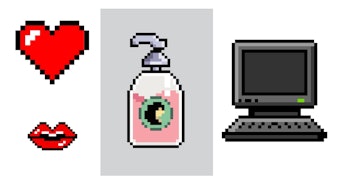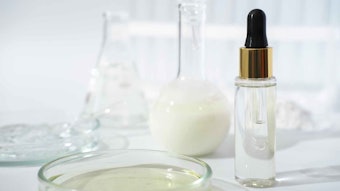Formulating for pet care is not that different from formulating personal care. Tony De Vos, the president and owner of Cardinal Laboratories Inc., knows this fact all too well, as he has spent nearly his entire career wedged between the two. Although it may seem that formulating for pet care would be simpler than personal care, the truth may astonish some.
Log in to view the full article
Formulating for pet care is not that different from formulating personal care. Tony De Vos, the president and owner of Cardinal Laboratories Inc., knows this fact all too well, as he has spent nearly his entire career wedged between the two. Although it may seem that formulating for pet care would be simpler than personal care, the truth may astonish some.
In addition to being president and founder of Cardinal Laboratories Inc., a pet care supplier, De Vos is also president and founder of Westwood Laboratories Inc. a company that formulates pet care and personal care in addition to serving as a contract manufacturer. According to De Vos, formulating for pet care products, specifically dog-grooming products, is more difficult due to the variance in the dog breeds.
“There are only a few types of human hair in the personal care industry—you have African hair, European hair and Asian hair; in the world of dogs, there are many different coats,” said Devos.
Therefore, when formulating dog care products, many variables must be considered. Groomability is an example of such a variable, according to De Vos.
“Groomability is when a person uses a product on their dog and they get the desired result.” Also, dog care formulators must consider the pH structure of the dog’s skin. Dogs’ skin is more alkaline than humans and has a higher pH, therefore products can be irritating if not correctly formulated.
Ingredients for Pet Care
Consumers expect dog care products to cost less than personal care products, which is unrealistic, according to De Vos. Dog care products are priced similarly to personal care products because they incorporate similar, if not the same ingredients. In addition, the same amount of research and testing must be performed on dog care products as on human care products if not more because of the large number of breeds being treated.
Natural extracts are becoming popular in the dog care industry. For example, some of De Vos’ dog care products are formulated with birch leaf extract to add luster and shine to a dog’s coat, wheat- or oat-derived surfactants are used to help calm skin and reduce irritation, and chamomile flower extract is included to add vitamins to the dog’s skin and coat.
Formulators for dog care products typically look for proteins, antioxidants and silk amino acid to add to their products, according to De Vos. He believes that attention to detail during the procedure by which the ingredients are formulated together makes certain dog care products stand out. According to De Vos, some dog care companies do not take the time to properly formulate their products to truly be efficacious.
Trends
Trends in personal care closely relate to pet care, according to De Vos; for example, the emergence of luxury or high-end personal care products is being seen in pet care.
“Just like in the cosmetic industry, the pet care industry has different consumers. Some consumers are willing to pay more for better ingredients for their pets while there are those who are not willing to spend a lot on their animals,” added De Vos.
As mentioned, the trend for naturals also has taken a hold of the pet care industry. “The people who want to use natural products on themselves generally want to use natural products on their pets,” said De Vos.
Inspiration
Much like personal care formulators drawing product ideas from dermatology, pet care formulators collect product ideas from the veterinary industry.
“We come up with our ideas from experience and research,” said De Vos. “We are heavily involved in the veterinary industry; it is able to inform us of different issues in pet grooming because of hands-on experience,” added De Vos.
The dog care industry also collects ideas from the personal care industry, always asking themselves if they can find benefit for dogs in personal care ingredients.
The Big Differences
Although there are similar ingredients formulated in both dog care products and personal care products, the level of ingredients formulated into the two industries differs.
“It is the ratio of ingredients that might be different. Dogs typically need higher levels of ingredients in the products because they are being applied less frequently, usually every few weeks, in comparison to a person who is using a product every day,” explained De Vos.
Another difference lies in the mildness of the ingredients.
“Dogs lick themselves and ingest the ingredients that are imparted on their coats, so we have to know that the formulated ingredients can be ingested,” said De Vos, who added that it is important to understand the nature of the animal for which they are formulating.










